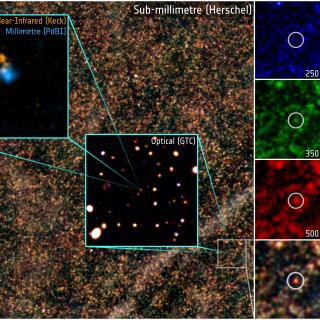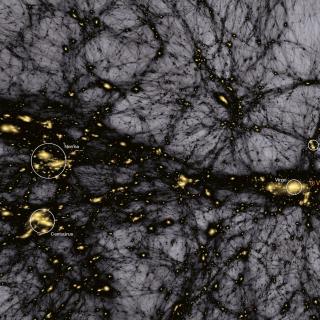Bibcode
Agarwal, N.; Ho, Shirley; Myers, Adam D.; Seo, Hee-Jong; Ross, Ashley J.; Bahcall, Neta; Brinkmann, Jonathan; Eisenstein, Daniel J.; Muna, Demitri; Palanque-Delabrouille, Nathalie; Pâris, Isabelle; Petitjean, Patrick; Schneider, Donald P.; Streblyanska, A.; Weaver, Benjamin A.; Yèche, Christophe
Referencia bibliográfica
Journal of Cosmology and Astroparticle Physics, Issue 04, article id. 007, pp. (2014).
Fecha de publicación:
4
2014
Número de citas
21
Número de citas referidas
18
Descripción
Photometric large scale structure (LSS) surveys probe the largest
volumes in the Universe, but are inevitably limited by systematic
uncertainties. Imperfect photometric calibration leads to biases in our
measurements of the density fields of LSS tracers such as galaxies and
quasars, and as a result in cosmological parameter estimation. Earlier
studies have proposed using cross-correlations between different
redshift slices or cross-correlations between different surveys to
reduce the effects of such systematics. In this paper we develop a
method to characterize unknown systematics. We demonstrate that while we
do not have sufficient information to correct for unknown systematics in
the data, we can obtain an estimate of their magnitude. We define a
parameter to estimate contamination from unknown systematics using
cross-correlations between different redshift slices and propose
discarding bins in the angular power spectrum that lie outside a certain
contamination tolerance level. We show that this method improves
estimates of the bias using simulated data and further apply it to
photometric luminous red galaxies in the Sloan Digital Sky Survey as a
case study.
Proyectos relacionados

Formación y Evolución de Galaxias: Observaciones Infrarrojas y en otras Longitudes de Onda
Este grupo desarrolla varios proyectos extragalácticos en diferentes rangos del espectro electromagnético utilizando satélites y telescopios en tierra para estudiar la evolución cosmológica de las galaxias y el origen de la actividad nuclear en galaxias activas. En el aspecto instrumental, el grupo forma parte del consorcio internacional que ha
Ismael
Pérez Fournon

Cosmología con Trazadores de la Estructura a Gran Escala del Universo
El Fondo Cósmico de Microondas (FCM) contiene la información estadística de las semillas primigenias que han dado lugar a la formación de todas las estructuras en el Universo. Su contrapartida natural en el Universo local es la distribución de las galaxias que surgen como resultado del crecimiento gravitatorio de aquellas fluctuaciones de densidad
FRANCISCO SHU
KITAURA JOYANES